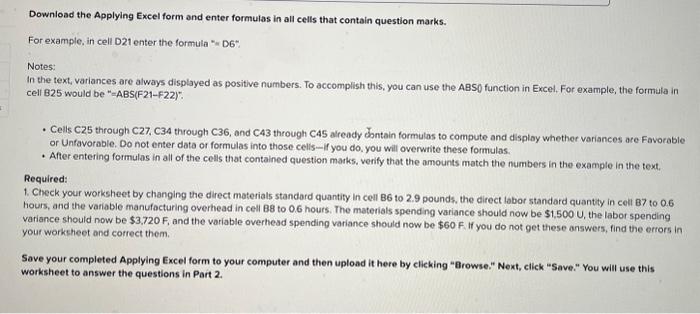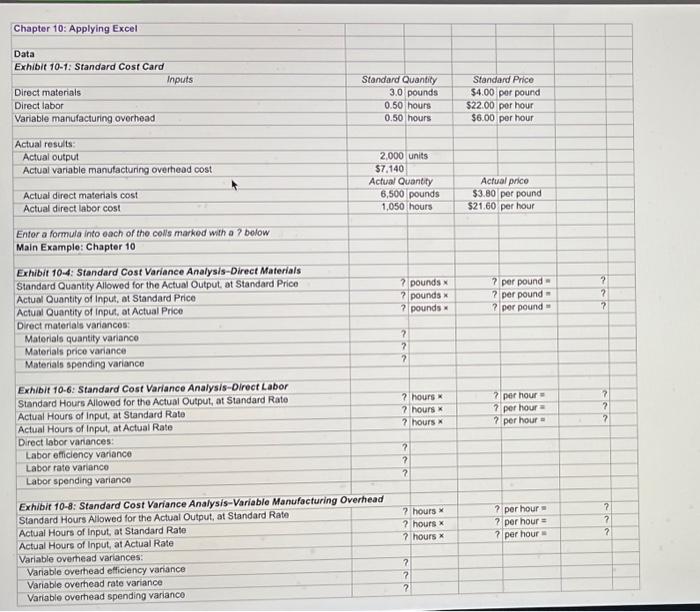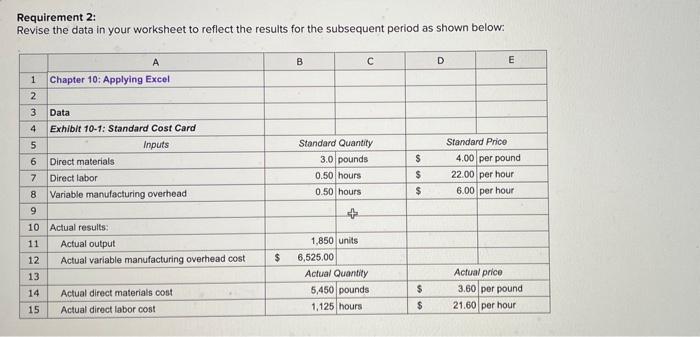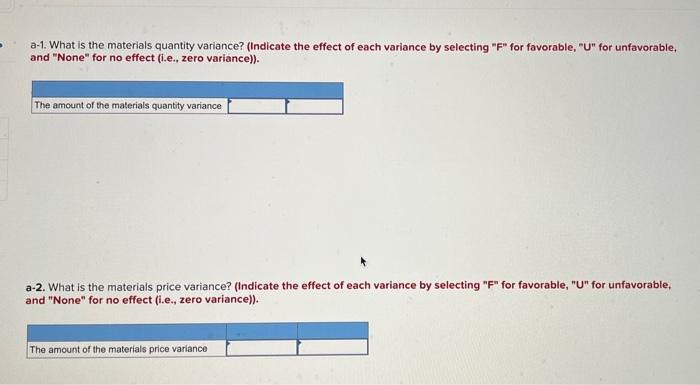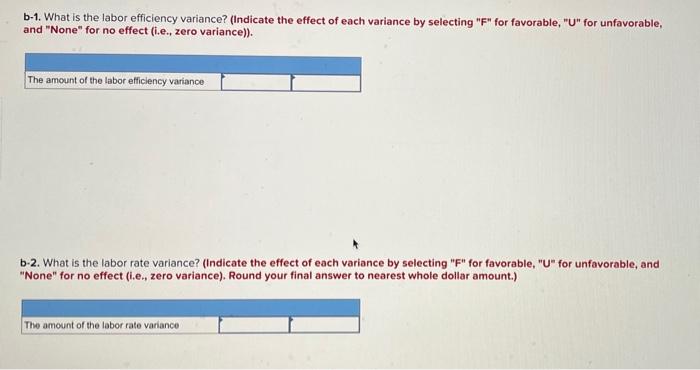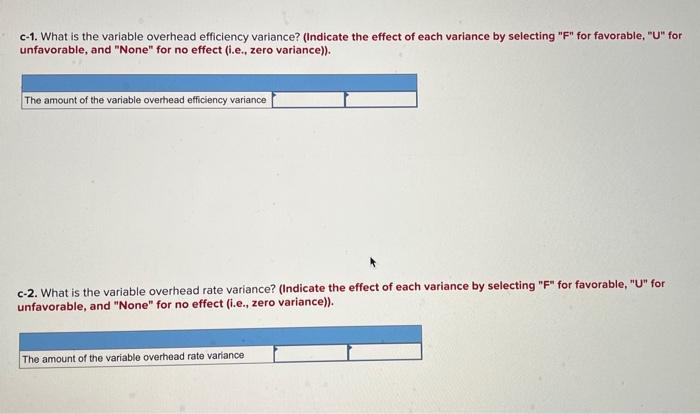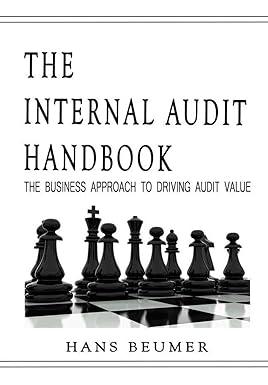Download the Applying Excel form and enter formulas in all cells that contain question marks. For example, in cell D21 enter the formula "= D6* Notes: In the text, variances are always displayed as positive numbers. To accomplish this, you can use the ABSO function in Excel. For example, the formula in cell 825 would be "=ABS(F21-F22)" - Cells C25 through C27, C3A through C36, and C43 through CAS already dontain formulas to compute and display whether variances are Favorable or Unfavorable. Do not enter data or formulas into those cells - If you do. you will overwtite these formulas. - After entering formulas in all of the cells that contained question matks, verify that the amounts match the numbers in the example in the text. Required: 1. Check your worksheet by changing the direct materials standard quantity in cell B6 to 2.9 pounds, the direct lobor standard quantity in cell 87 to 0.6 hours, and the variable manufacturing overhead in cell B8 to 0.6 hours. The materials spending variance should now be $1,500 U, the labor spending variance should now be $3,720F, and the variable overhead spending variance should now be $60F. If you do not get these answers, find the errors in your workcheet and correct them. Save your completed Applying Excel form to your computer and then upload it here by clicking "Browse." Next, click "Save." You will use this worksheet to answer the questions in Part 2. Chapter 10: Applying Excel Data Exhibit 10-1: Standard Cost Card Variable overhead spending varianco Requirement 2: Revise the data in your worksheet to reflect the results for the subsequent period as shown below: a-1. What is the materials quantity variance? (Indicate the effect of each variance by selecting "F" for favorable, "U" for unfavorable, and "None" for no effect (i.e., zero variance)). a-2. What is the materials price variance? (Indicate the effect of each variance by selecting "F" for favorable, "U" for unfavorable, and "None" for no effect (i.e., zero variance)). b-1. What is the labor efficiency variance? (Indicate the effect of each variance by selecting "F" for favorable, "U" for unfavorable, and "None" for no effect (i.e., zero variance)). b-2. What is the labor rate variance? (Indicate the effect of each variance by selecting "F" for favorable, "U" for unfavorable, and "None" for no effect (i.e., zero variance). Round your final answer to nearest whole dollar amount.) c-1. What is the variable overhead efficiency variance? (Indicate the effect of each variance by selecting "F" for favorable, "U" for unfavorable, and "None" for no effect (i.e., zero variance)). c-2. What is the variable overhead rate variance? (Indicate the effect of each variance by selecting "F" for favorable, "U" for unfavorable, and "None" for no effect (i.e., zero variance))
